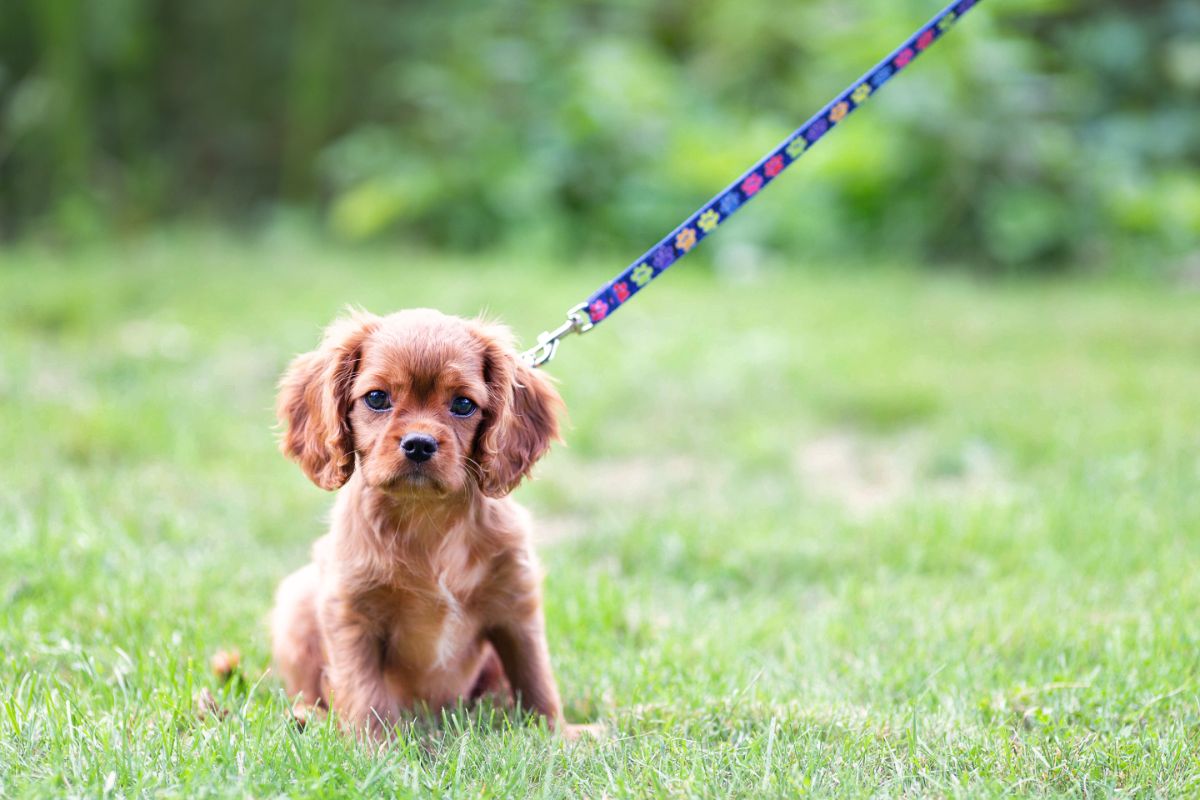German Shepherds are incredibly popular dogs to keep as pets, but it is no secret that they can be quite overwhelming when they aren’t trained.
They are quite big dogs and require a lot of attention and care, but when you have a good training regime, it can make life a lot easier.
Whether you are a seasoned dog owner or you are completely new to it, we have put together a complete guide to help you train your German Shepherd.

Once you have gone over this guide and learned a bit more about your dog, you will feel confident enough to train them and keep the chaos at bay!
What Is The Best Age To Train A German Shepherd?
You can train your German Shepherd at any age, but if you want an easier time with it, the recommended age range is between 3 to 9 months.
When they are a puppy, commands stick in their heads a bit easier, and they are more likely to take that behavior into their adult life.
If your dog is older, you can still be successful in training them; you just need a bit more patience, and you may need to go over their training a bit longer.
German Shepherds are known for their obedience as well as their smarts, so even if they are older, you can still train them well.
Are German Shepherds Easy To Train?
German Shepherds are considered to be one of the most intelligent dog breeds in the world, and this actually makes them quite easy to train.
It does help to know what you are doing, though, and if you have no experience in training dogs, you may find the process a bit harder.
But even as a beginner, training a German Shepherd is a lot easier than training some other breeds, as long as you establish that you are the master or the top dog early on.
How To Train A German Shepherd
German Shepherds as a breed have all the same traits and characteristics, but no two German Shepherds are the same.
Your German Shepherd’s disposition and behavior are going to largely come down to how healthy they are, how active they are, and their environment.
Below, you will find some tips and tricks and different methods to take into consideration when you are training your German Shepherd.
Reward Based Training
This type of training has been tried and tested on dogs of all breeds, and it also works on German Shepherds.
Reward-based training involves rewarding your dog whenever they display good behavior and completely ignoring or sternly saying ‘No’ to any bad behavior.
Over time, your dog learns that bad behavior doesn’t serve them and gets them nothing, whereas good behavior gets them treats, toys, or any other good things that they want.
This particular method of training might not work on all German Shepherds, but it is worth trying it out on yours to see if they take to it.
If you do opt for reward-based training, remember to be patient.
This method does not work overnight, and you might need a few weeks before you see any real changes.
Crate Training
Lots of people don’t like crate training when it comes to their dogs because it feels like they are being locked up. But crate training, when it is done properly, is actually incredibly effective, and it works on German Shepherds, too.
Crate training is all about teaching your dog that the crate is their ‘safe space’, and when they register that in their heads, they will go to the crate without being prompted, and it helps to establish boundaries and routine.
It does involve locking them in the crates in a lot of situations, but once they establish it is a safe space, they won’t find this action negative.
There are some important dos and don’ts when it comes to crate training in order for it to be effective, so keep these in mind if you choose to go down this route.
Do’s:
- Use a cheerful tone of voice and praise them when they use their crate. This does take time and patience, but once they understand the positive association, they will use their crate more.
- Set up the crate to be a positive space. Make the crate comfortable for your German Shepherd – add in blankets, toys, and even some dog treats. The more cozy the space is, the more likely it will be that your dog will want to use it, even without words of affirmation.
- Reward them when they use the crate. Similar to the first point, there are more ways to reward your dog than just a cheerful tone or giving them praise. You can give them a treat whenever they use their crate themselves during the training period, or if they’re not particularly food-orientated, you can give them their special toys instead.
Don’ts:
- Don’t keep them in their crate for a long time. When you are first crate training your dog, you don’t want them to spend too much time there. As you need to lock them in for periods of time, it is important that they don’t feel trapped. Start by locking them in the crate for 10 to 15 minutes at first, gradually increasing the length of time as the days go by.
- Don’t use the crate as a punishment. This is the most important thing to remember when crate training. The crate is meant to be their safe space, not somewhere they go when they are being punished. If you use it as a punishment tactic, they will always think of the crate as being negative, and kicking that habit will be incredibly difficult.
- Don’t avoid the crate in the early stages of training. Many people find it hard to start crate training, especially if the dog is a puppy. But it is so important to introduce the crate as early as you can. Don’t just leave it ignored for a few days or weeks. The earlier they become familiar with the crate, the easier it will be for them to use it.

Obedience Training
Regardless of the breed of dog you have, basic obedience training is absolutely essential.
German Shepherds are intelligent dogs, and they will take to this type of training if you are patient.
Basic obedience training involves teaching your German Shepherds commands like ‘Sit’, ‘Stay’, or ‘Lie Down’.
This type of training helps to establish boundaries and teaches your dog to listen to you.
Sit
Lots of dog owners choose to teach ‘Sit’ first because it’s one of the easiest to start with. All you need is a few treats or a toy, and you will be good to go.
Start by going to your German Shepherd when it is standing up and then hold a treat above its nose. In a slow motion, move the treat above their head. You will know they are focused if they follow the treat with their eyes.
In most cases, this motion actually ends up with the dog naturally falling into the sitting position. You may need to be patient and do this motion a few times, but once they are sitting, you can reward them with the treat.
You will need to repeat this process a few times so they can learn to sit for longer, but once you feel like they are getting the hang of it, you can start verbally saying ‘sit’ so they know what to do when you call the command out in the future.
Lie Down
‘Lie Down’ is another great trick you should teach your German Shepherd. It helps to teach them ‘Sit’ first because you can adapt the training routine to teach them ‘Lie Down’.
Once you have them in a sitting position, you want to hold a treat above their nose and gradually bring it down to their front paws. It may take a few tries, but your German Shepherd will eventually follow the treat with their nose and lie down.
As soon as they do lie down, you can reward them with the treat and incorporate the verbal ‘Lie Down’ cue into the training.
If they sit up or break formation at any point in the process, simply start again.
What Is The Best Method For Training A German Shepherd?
As you can see, there are many ways to train a German Shepherd, but most experienced trainers find that the Reward-Based Training method is the easiest one to follow.
Luckily, you can incorporate this method into a lot of the other ones we have listed here.
It’s all about finding what works for you and your dog so you can enjoy successful training sessions together.
Learn to understand your dog’s cues, know when they are getting tired, and which rewards they respond to best.
Conclusion
German Shepherds are one of the most intelligent dog breeds on the planet, and they are usually quite easy to train.
You will need patience and perseverance in order to train them successfully, but even beginner trainers should have no problem if they are willing.
You may also like: Australian Shepherds vs. German Shepherds.
- Your Complete Guide On How To Train A German Shepherd - November 1, 2023
- Breed Comparison: Australian Shepherd Vs. German Shepherd - October 27, 2023
- Your Complete Guide On How To Train A Bernedoodle - October 26, 2023










